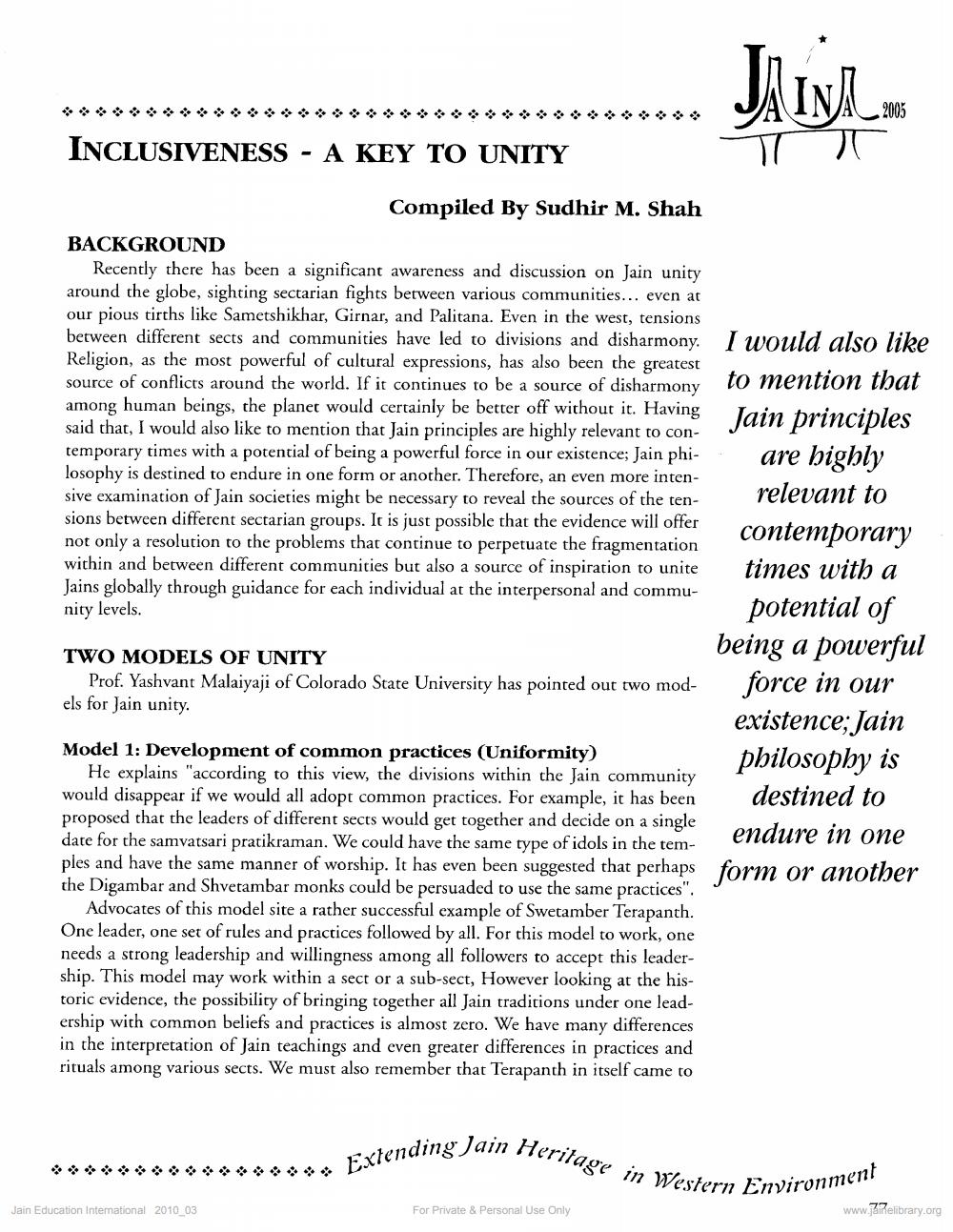________________
܀܀܀܀܀܀܀܀܀܀܀܀
INCLUSIVENESS
-
܀܀܀܀܀܀܀ ܀܀܀
A KEY TO UNITY
Jain Education International 2010_03
܀܀܀
Compiled By Sudhir M. Shah
TWO MODELS OF UNITY
Prof. Yashvant Malaiyaji of Colorado State University has pointed out two models for Jain unity.
BACKGROUND
Recently there has been a significant awareness and discussion on Jain unity around the globe, sighting sectarian fights between various communities... even at our pious tirths like Sametshikhar, Girnar, and Palitana. Even in the west, tensions between different sects and communities have led to divisions and disharmony. Religion, as the most powerful of cultural expressions, has also been the greatest source of conflicts around the world. If it continues to be a source of disharmony
I would also like
to mention that
among human beings, the planet would certainly be better off without it. Having Jain principles
said that, I would also like to mention that Jain principles are highly relevant to contemporary times with a potential of being a powerful force in our existence; Jain philosophy is destined to endure in one form or another. Therefore, an even more intensive examination of Jain societies might be necessary to reveal the sources of the tensions between different sectarian groups. It is just possible that the evidence will offer not only a resolution to the problems that continue to perpetuate the fragmentation within and between different communities but also a source of inspiration to unite Jains globally through guidance for each individual at the interpersonal and community levels.
are highly relevant to contemporary times with a potential of being a powerful force in our existence; Jain philosophy is destined to
Model 1: Development of common practices (Uniformity)
He explains "according to this view, the divisions within the Jain community would disappear if we would all adopt common practices. For example, it has been proposed that the leaders of different sects would get together and decide on a single date for the samvatsari pratikraman. We could have the same type of idols in the temples and have the same manner of worship. It has even been suggested that perhaps the Digambar and Shvetambar monks could be persuaded to use the same practices". Advocates of this model site a rather successful example of Swetamber Terapanth. One leader, one set of rules and practices followed by all. For this model to work, one needs a strong leadership and willingness among all followers to accept this leadership. This model may work within a sect or a sub-sect, However looking at the historic evidence, the possibility of bringing together all Jain traditions under one leadership with common beliefs and practices is almost zero. We have many differences in the interpretation of Jain teachings and even greater differences in practices and rituals among various sects. We must also remember that Terapanth in itself came to
܀܀
JAINA
ᅲ
For Private & Personal Use Only
2005
endure in one
form or another
Extending Jain Heritage in Western Environment
www.jainelibrary.org




